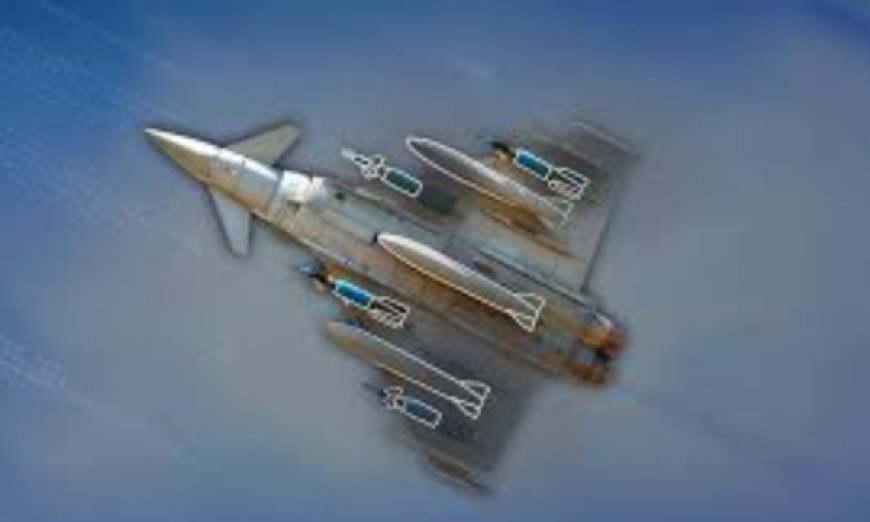Store Load Testing: Ensuring Safe Flight Integration

In modern aerospace and defense systems, Store Load Testing is a crucial engineering process used to ensure that external or internal stores (like missiles, bombs, fuel tanks, or pods) can be safely and effectively carried by an aircraft. This testing validates both the structural integrity of the store and the aircraft under various flight conditions and ensures compatibility, safety, and mission readiness.
Whether you're designing a new missile system or integrating an existing one onto a different aircraft, store load testing is a non-negotiable part of the certification and development process.
What Is Store Load Testing?
Store Load Testing refers to the process of evaluating the structural and aerodynamic loads that stores (external or internal payloads) impose on an aircraft and vice versa. It is conducted to determine:
-
If the store can safely withstand the dynamic forces during flight.
-
If the aircraft's pylon or carriage system can handle the weight and load of the store.
-
If there are any adverse effects on flight performance or safety.
This testing is applicable to all types of stores, including:
-
Missiles
-
Bombs
-
Electronic Warfare pods
-
Reconnaissance pods
-
External fuel tanks
-
Gun pods
-
Sensor systems
Why Is Store Load Testing Important?
The integration of a store onto an aircraft changes its aerodynamics, weight distribution, and structural load paths. If these changes are not properly tested, they can result in serious risks, including:
-
Structural damage to the aircraft or store
-
Inaccurate weapon delivery
-
Aircraft instability or control issues
-
Failure to meet regulatory compliance or safety standards
-
Risk to pilot and mission
Store Load Testing is designed to prevent such scenarios by simulating all relevant stress and load conditions before flight deployment.
Types of Store Load Testing
Store load testing typically includes several sub-categories, each aimed at a different aspect of structural and flight validation:
1. Static Load Testing
This test applies measured forces on the store (or the aircraft pylon) while it is stationary. It simulates maximum expected flight loads to validate structural strength.
-
Simulates high-G maneuvers
-
Confirms structural integrity
-
Ensures store or aircraft components wont fail under extreme stress
2. Dynamic Load Testing
Dynamic load testing focuses on the loads experienced due to movement, such as vibration, shock, and oscillation during flight.
-
Simulates vibrations from engine or air turbulence
-
Identifies resonant frequencies
-
Helps in fatigue analysis over repeated flights
3. Environmental Load Testing
Stores are tested for endurance under environmental conditions like:
-
Temperature extremes
-
Humidity
-
Altitude pressure
-
Rain, ice, and wind resistance
This ensures that the store will function correctly in all operational environments.
4. Flight Load Testing
This involves flying the aircraft with the store under various conditions and collecting real-time data on loads and stresses.
-
Measures real aerodynamic forces
-
Validates earlier ground test data
-
Confirms safe carriage and release behavior
Key Elements Measured in Store Load Testing
To ensure that both the aircraft and the store can operate safely and effectively, the following parameters are typically measured:
-
Bending Moments: Force causing the store to bend around a fixed point
-
Shear Forces: Lateral forces that can cause separation or misalignment
-
Torsion: Twisting force applied to the store body
-
Vibrations: Frequencies and amplitudes experienced during different flight regimes
-
Stress and Strain: Deformation of the store or aircraft pylon due to external forces
-
Center of Gravity Shifts: How the stores weight affects aircraft stability
Store Load Testing Equipment and Tools
To conduct accurate and reliable store load testing, engineers use a combination of:
1. Load Cells and Strain Gauges
-
Measure real-time force and deformation
-
Placed at key points on the store and aircraft structure
2. Accelerometers and Gyroscopes
-
Monitor motion and orientation
-
Used in dynamic and flight testing
3. Telemetry Systems
-
Transmit data from the aircraft to ground stations
-
Allow real-time monitoring during flight testing
4. Finite Element Modeling (FEM) Software
-
Used for simulating and validating structural models before physical testing
-
Helps in predicting load behavior under various conditions
Store Certification and Compliance
In military and civilian aerospace programs, any new store must undergo load testing to receive certification. Agencies like the FAA, NATO, or defense-specific authorities mandate that all stores carried externally or internally must pass structural load tests.
Certification typically involves:
-
Ground load testing reports
-
Flight test data
-
Structural analysis documentation
-
Safety review and approval
Failing to meet certification requirements can delay project deployment and add substantial cost and time.
Common Challenges in Store Load Testing
Despite being a well-defined process, store load testing presents some unique challenges:
-
Complex Load Paths: Stores interact with airflow, vibrations, and multiple force vectors simultaneously.
-
Custom Store Designs: Many weapon systems are custom-built, requiring unique test rigs and configurations.
-
Integration Across Multiple Aircraft: A store may be required to fit and function on multiple platforms, each needing its own test and validation.
-
Test Cost and Time: Load testing, especially flight-based, can be expensive and logistically demanding.
Case Example: Missile Load Testing on a Fighter Jet
Lets consider a real-world example. A new air-to-surface missile is being integrated onto a fourth-generation fighter jet. The load testing process would include:
-
Ground Static Test: Apply maximum expected G-forces on the missile using hydraulic actuators.
-
Dynamic Vibration Test: Simulate in-flight engine vibration and turbulence.
-
Flight Trials: Carry the missile on actual flight profiles including high-speed dives, turns, and ascents.
-
Data Analysis: Review load data to confirm no structural failures or excessive stress.
-
Certification: Submit a full test report for clearance before operational use.
The Future of Store Load Testing
With the evolution of smart weapons and stealth aircraft, store load testing is also evolving. Future trends include:
-
Digital Twins: Creating real-time digital replicas of the store-aircraft interaction for more precise simulation.
-
AI-Powered Analysis: AI is being used to predict failure points and optimize design before testing.
-
Advanced Materials Testing: New composite materials used in stores require specialized load testing protocols.
-
Modular Testing Systems: Quick adaptation to different store types and aircraft using reconfigurable test rigs.






































